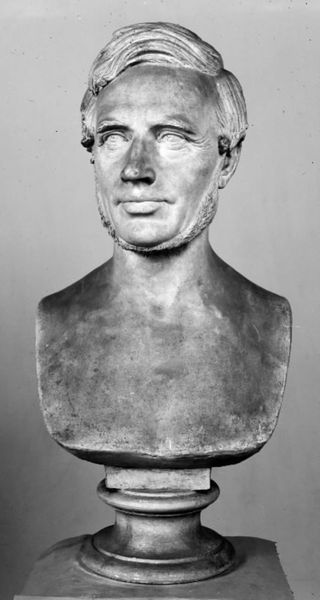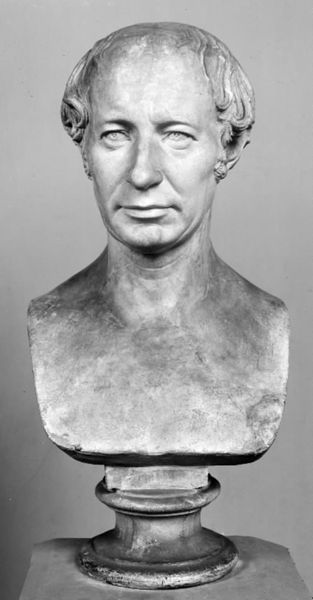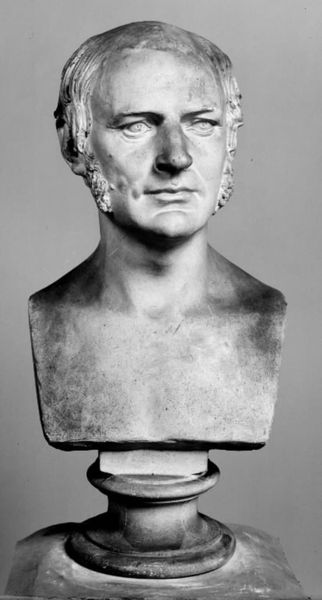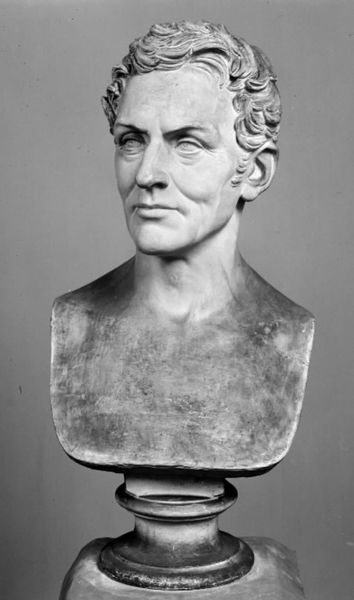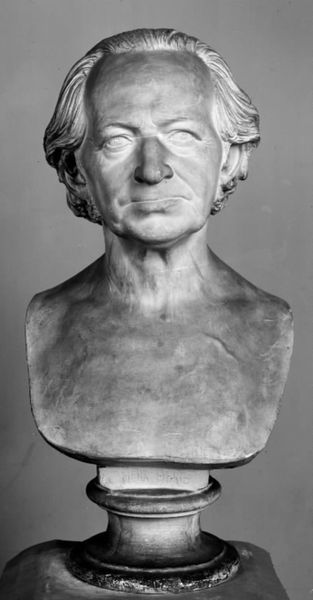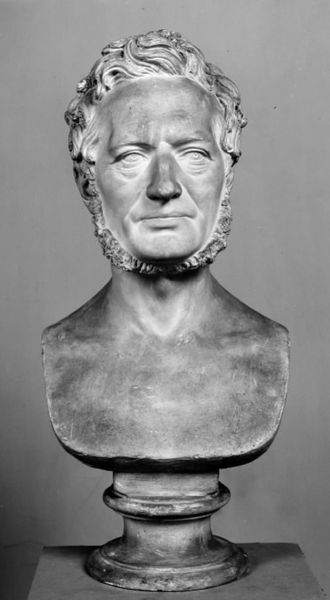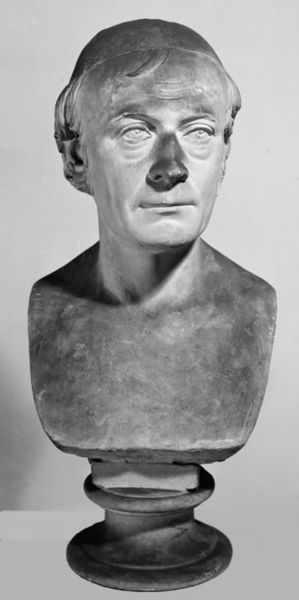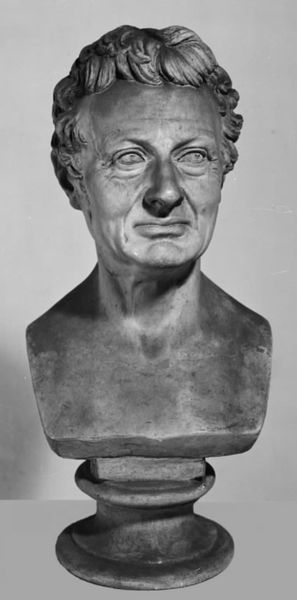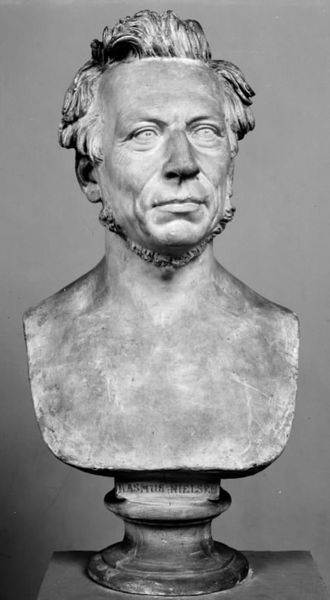
Dimensions: 68.5 cm (height) (Netto)
Curator: Here we have a marble bust dating back to 1865. It's a portrait of the Norwegian writer Bjørnstjerne Bjørnson, sculpted by H.W. Bissen. Editor: My first impression is one of austere nobility. The cool, smooth surface of the marble gives Bjørnson a sense of detached intellect, almost intimidating. Curator: Bissen was a follower of Neoclassicism, and you can see that influence in the clean lines and idealized form. This wasn't just about capturing a likeness; it was about immortalizing Bjørnson in a way that aligned him with classical ideals of heroism and intellect. It also raises questions about the cultural capital Bjørnson commanded and how such portraits played into solidifying his position within Norwegian society and beyond. Editor: Absolutely. Marble, of course, was the material of choice for this kind of aggrandizement. The choice isn't arbitrary; it links him to a legacy of powerful figures represented throughout art history, shaping and justifying ideas of nation and narrative. It also required access to specialized quarries and the labour of skilled artisans, who themselves contributed to the shaping of Bjørnson’s image. Curator: Bissen was working during a time of growing Norwegian national identity, and Bjørnson was a key figure in that movement. Commissioning a marble bust, intended for public display, further reinforced his role as a national icon. What do you make of the stoic, unsmiling portrayal? Editor: It's carefully constructed. There's no excess emotion; his gaze is direct and unflinching. It speaks to the seriousness and purpose he embodied as a writer and cultural figure, strategically designed to influence the perception of him as a vital public figure shaping national identity and historical narratives. It fits neatly into the way images were leveraged as components of nation-building. Curator: And while marble has always been associated with fine art and the elite, how interesting that Bissen would leverage it here as part of a strategy towards nationalism in 19th century Norway. Editor: It does suggest a very intentional act. Considering this, the choice of marble reveals the convergence of material value and cultural symbolism in solidifying the place of both artist and subject in Norway's story. Curator: Thinking about the wider context of the production, patronage, and intended impact makes this so much more than just a representation of a famous face. Editor: Indeed. It's a calculated projection, carefully sculpted from specific resources to reinforce power within a complex historical and cultural framework.
Comments
No comments
Be the first to comment and join the conversation on the ultimate creative platform.
